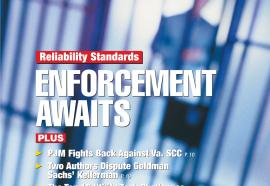One RTO, Two Systems
By trying to placate regulated states—letting utilities “opt out” from its capacity market—PJM finds its RPM idea under fire.
While the PJM Interconnection has made no major changes to its prototype capacity market since it proposed the idea a year ago in August, and though it has won a tacit OK from federal regulators for many of the plan’s key elements, don’t expect to see a slam dunk when the time comes for a final review of the controversial idea, known as the Reliability Pricing Model.






